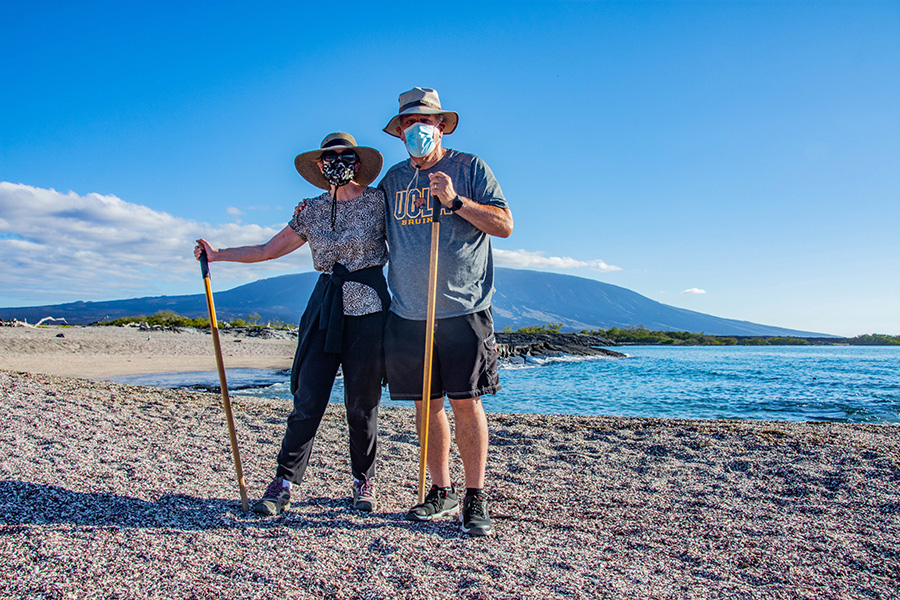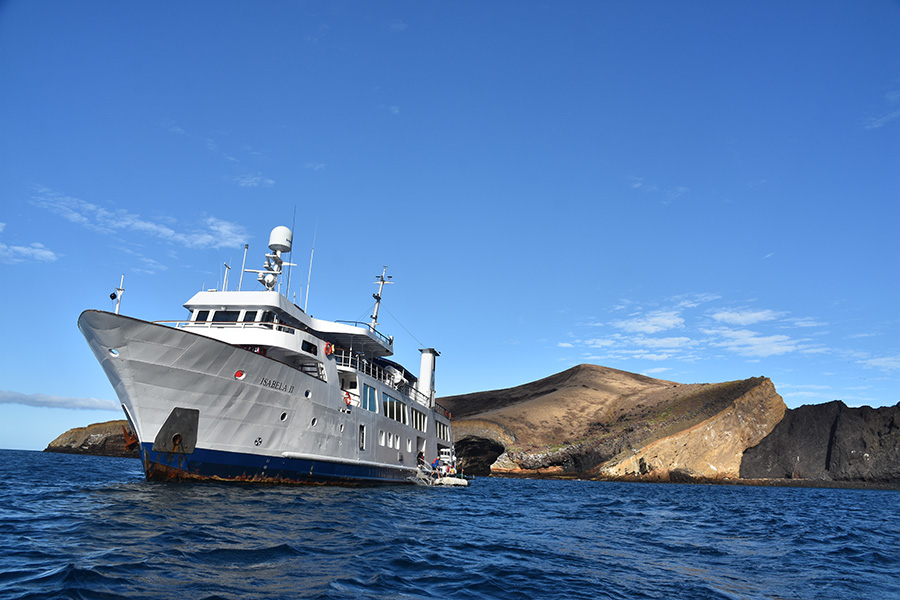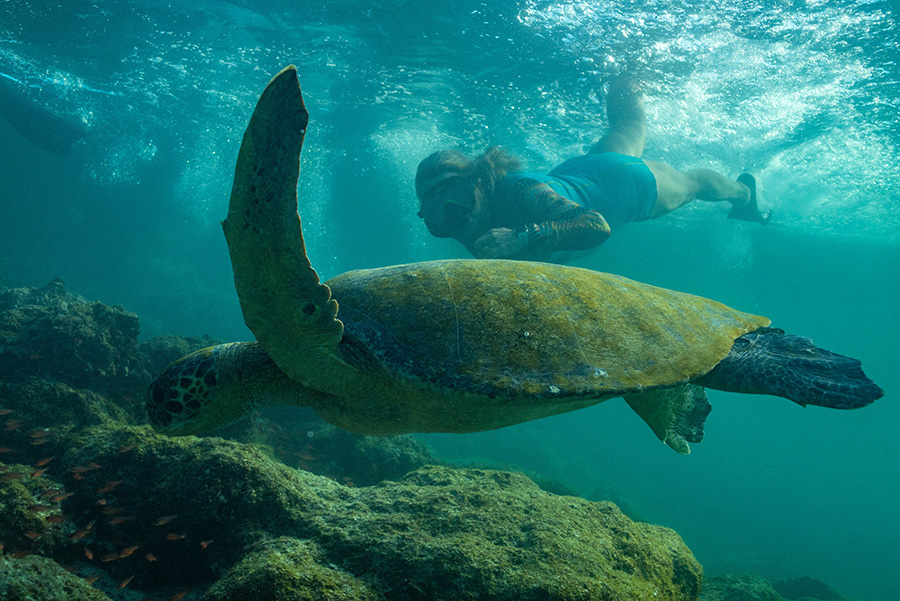Principia Lifelong Learning Resumes with Galápagos Adventure

(Photos courtesy of the Principia Lifelong Learning travelers)
After a 14-month hiatus due to the pandemic, Principia Lifelong Learning (PLL) trips resumed with an adventure to the Galápagos Islands aboard the Isabela II. The trip took place July 20–27, 2021, with optional pre-trip and post-trip forays to major South American sites.
Principia College Biology Professor and veteran researcher Dr. Scott Eckert posed the central question of the trip in his onboard presentations—“Galápagos Islands: What’s the Big Deal?” And the travelers spent the duration of the voyage discovering the answers.
As Director of Lifelong Learning Heather Biró said before the trip launched, “The Galápagos Islands are central to modern scientific and evolutionary history. In a place where human presence is relatively minimal, you can observe and photograph remarkable species up close, including blue-footed boobies, tortoises, and sea lions.”
Travel Log Excerpts
Galápagos traveler Richard Crandell (C’82) wrote about his experiences on the trip. Here are excerpts from his account:
 July 22—We flew to Baltra Island in the Galápagos Archipelago. Some iconic wildlife—a land iguana, a lava lizard, and finches—were on hand just outside the airport, seeming to greet us. … For the rest of that day and the next three, we would cruise to noteworthy places, get close to wildlife—some of it underwater while we were snorkeling—and take walks in remarkable landscapes. What struck us was how different the islands were from each other. … On one island alone, Santa Cruz, we passed through five different vegetation zones in the space of a few miles, ranging from near-desert conditions to a wet, cloudy ecosystem, promoting lush vegetation for the giant tortoises that we saw.
July 22—We flew to Baltra Island in the Galápagos Archipelago. Some iconic wildlife—a land iguana, a lava lizard, and finches—were on hand just outside the airport, seeming to greet us. … For the rest of that day and the next three, we would cruise to noteworthy places, get close to wildlife—some of it underwater while we were snorkeling—and take walks in remarkable landscapes. What struck us was how different the islands were from each other. … On one island alone, Santa Cruz, we passed through five different vegetation zones in the space of a few miles, ranging from near-desert conditions to a wet, cloudy ecosystem, promoting lush vegetation for the giant tortoises that we saw.
July 23—We reached the islands of Bartholomew, a volcanic cone rising out of Sullivan Bay and featuring blue-footed boobies and penguins (yes, penguins in the tropics), and Santiago Island, with a dramatic lava field dating to a volcanic eruption in 1889.
July 24—On Santiago Island, we walked around Dragon Hill, seeing black-and-gray marine iguanas and yellow-and-green land iguanas. Our naturalist guide from the ship, Dennis, astounded us by mimicking yellow warbler calls, summoning the colorful birds from the bushes around us. Later, at Playa Espumilla, we went kayaking or snorkeling. Santiago is the only island that we visited in common with Charles Darwin, who explored it on foot in September 1835.

July 25—We saw Punta Vicente Roca at Isabela Island in the morning and visited Punta Espinosa at Fernandina Island in the afternoon. On this day, we saw blue-footed boobies, Nazca boobies, petrels, frigate birds, noddies, pelicans, sea lions, fur seals, sea turtles, colorful fish, an olive stingray, a rare Galapagos bullhead shark, flightless cormorants, marine iguanas, lava lizards, a hawk, mockingbirds, and bottlenose dolphins.
July 26 and 27—We returned to the Ecuadorian mainland, where we stayed overnight at Guayaquil, and then either returned home or continued to Peru for further adventures. So, in the end, were the Galápagos Islands a big deal? Yes!
Add-on Adventures

Some of the PLL guests extended their adventures with a pre-trip to Mashpi Reserve in Ecuador and/or a post-trip to Machu Picchu, Cusco, and the Sacred Valley in Peru.
The Mashpi trip included a three-night stay at the famed Mashpi Lodge from which the group could explore the rainforest that’s considered the most diverse ecosystem in the world. Rare orchids, 32 hummingbird species, and a host of canopy-dwelling creatures were within an easy walk or cable-car ride of the lodge.
The post-tour was a journey into the heart of the Inca’s homelands in the Peruvian Andes. From the colorful village of Pisac in the Sacred Valley of the Incas, the group traveled to the ruins of Machu Picchu, the most important site of the vast Inca empire which lay hidden from Europeans until it was rediscovered in 1911. In the Cusco area, the group explored streets still flanked by Inca walls built with gigantic carved granite blocks, while sampling from local markets and enjoying gardens full of vividly colored flowers.
To enjoy more photos from the trip, please visit the following PLL trip albums.
Mashpi Pre-Trip Album
Galápagos-Trip Album
Machu Picchu Post-Trip Album